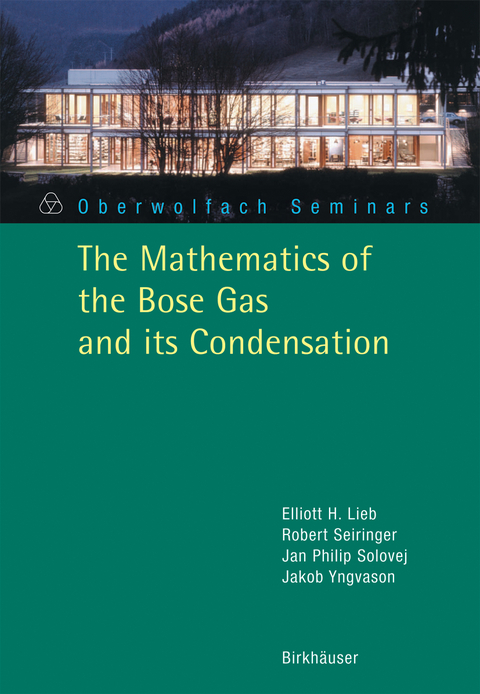
The Mathematics of the Bose Gas and its Condensation
Springer Basel (Verlag)
978-3-7643-7336-8 (ISBN)
The Dilute Bose Gas in 3D.- The Dilute Bose Gas in 2D.- Generalized Poincaré Inequalities.- Bose-Einstein Condensation and Superfluidity for Homogeneous Gases.- Gross-Pitaevskii Equation for Trapped Bosons.- Bose-Einstein Condensation and Superfluidity for Dilute Trapped Gases.- One-Dimensional Behavior of Dilute Bose Gases in Traps.- Two-Dimensional Behavior in Disc-Shaped Traps.- The Charged Bose Gas, the One- and Two-Component Cases.- Bose-Einstein Quantum Phase Transition in an Optical Lattice Model.
"The presentation provides significant insight into a large part of the current issues of interest in the physics of Bose systems and especially into the "kitchen" of several relevant mathematical techniques. As such, it is highly recommended to both advanced researchers and students preparing to work in this field."
(Mathematical Reviews)
| Erscheint lt. Verlag | 16.6.2005 |
|---|---|
| Reihe/Serie | Oberwolfach Seminars |
| Zusatzinfo | VIII, 208 p. |
| Verlagsort | Basel |
| Sprache | englisch |
| Gewicht | 416 g |
| Themenwelt | Mathematik / Informatik ► Mathematik |
| Naturwissenschaften ► Physik / Astronomie ► Atom- / Kern- / Molekularphysik | |
| Naturwissenschaften ► Physik / Astronomie ► Festkörperphysik | |
| Naturwissenschaften ► Physik / Astronomie ► Thermodynamik | |
| Schlagworte | Bose-Einstein condensation • Bose-Einstein-Kondensat • Bose Gas • Helium-Atom-Streuung • Mathematical Physics • PAS • PED • phase transition |
| ISBN-10 | 3-7643-7336-9 / 3764373369 |
| ISBN-13 | 978-3-7643-7336-8 / 9783764373368 |
| Zustand | Neuware |
| Informationen gemäß Produktsicherheitsverordnung (GPSR) | |
| Haben Sie eine Frage zum Produkt? |
aus dem Bereich


